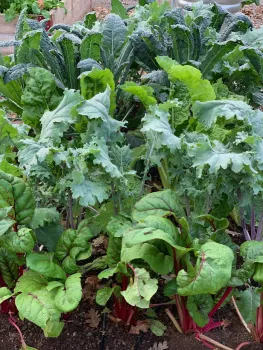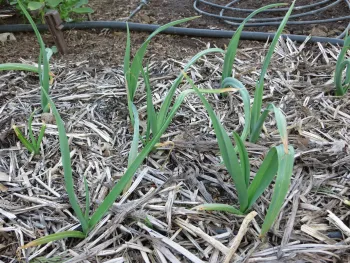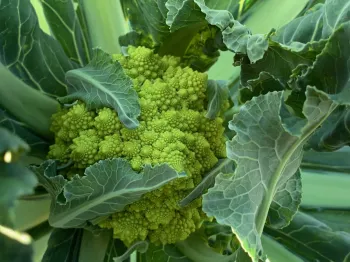
By Brent McGhie
It will soon be time to start planting many cool season crops. There are several reasons to plant a winter garden. Many crops actually taste better and grow best in cooler weather.
Also, a winter garden is less work: the weather is more comfortable and there is less weeding and watering to do. Finally, insects and diseases are less active when the days are shorter and cooler.
Here on the valley floor, if you are planning to grow plants from seed, September/October is the time to plant several greens, root crops and cole crops. Winter-growing greens include lettuce, Swiss chard, collards, mustard and kale.
Carrots, beets, turnips and radishes are examples of root crops that can be planted in the fall, while the cole crop category includes broccoli, cauliflower and cabbage. Spinach seed can be planted during October and November along with cool weather legumes such as peas and many bean varieties.

Onions planted at this time will provide green onions in March and April and should produce edible bulbs by June or July. Garlic cloves can be planted in October/November for summer harvest as well. (When buying garlic cloves for planting, it is prudent to buy seed cloves from a certified source to ensure that they are nematode- and disease-free).
Before planting, prepare your garden by removing weeds and tilling the soil. This is the ideal time to amend your soil with compost. It is also a good idea to remove the residue from your summer garden and put it in the compost pile. Plant residues can harbor over-wintering disease and insects that can infest your summer garden next season.
If you live in an area where water drainage is a problem, raised beds containing loamy soil will keep your garden from becoming water-logged during winter rains. Just as it does during the summer, a layer of mulch around your winter vegetables will conserve water and keep weeds at bay.
Problems with garden pests are minimal during the winter. However, cabbage worms will attack cole crops. If you spot the damage or droppings from these pests, the plants can be treated with an insecticide containing Bacillus thuringiensis (BT). BT is a naturally- occurring bacterium that is fatal to caterpillars but safe for humans and pets, and has the added advantage of being non-toxic to beneficial insects.

Snails and slugs are also active in the cool, moist winter months. Hand-picking snails and slugs is an effective way to reduce the adult breeding population, but if you’re not comfortable doing this, baits containing iron phosphate are effective and safe around children and pets.
Another method of controlling garden pests is to install floating row covers with the bottom edges buried securely in the soil. These are made of a lightweight spun fiber material which sunlight and rain can pass through, but insects cannot penetrate. Floating row covers actually “float” over crops and lift up as the plants grow taller. Not only will they help to exclude garden pests, but they will also offer a degree of protection from low nighttime temperatures.
Without too great an effort, you can have a garden this winter and enjoy harvesting fresh produce even when days are cold and dreary.
A new event! On Saturday, September 20. Each season the Master Gardeners Living Lab Team will present a talk keyed to the season with the focus on a few critical garden jobs. Monthly garden tips and planting schedules will be available, as well as other resources. The Fall Garden Talk will be held September 20 in the Chapman Park Teaching Garden. To register and for more information on the Seasonal Garden Series, visit our website.

UC Master Gardeners of Butte County are part of the University of California Cooperative Extension (UCCE) system. To learn more about us and our upcoming events, and for help with gardening in our area visit our website. If you have a gardening question or problem, email the Hotline at mgbutte@ucanr.edu or leave a phone message on our Hotline at 530-552-5812. To speak to a Master Gardener about a gardening issue, or to drop by the MG office during Hotline hours, see the most current information on our Ask Us section of our website.

